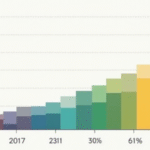Introduction
Petróleos Mexicanos (Pemex), the state-owned oil company, has faced significant challenges in boosting its refining capacity. The Dos Bocas refinery, a key project aimed at enhancing production, has yet to meet expectations. This article delves into the current state of Pemex’s refining activities and the impact of the Dos Bocas project.
Background on Pemex and the Dos Bocas Refinery
Petróleos Mexicanos (Pemex) is the state-owned oil company responsible for exploring, producing, and processing oil and gas in Mexico. The Dos Bocas refinery, located in Tabasco, is one of Pemex’s major projects aimed at increasing the country’s refining capacity. However, the refinery has faced delays and production issues since its inception.
Current State of Pemex’s Refining Activities
Overall Performance:
Between January and April, the crude oil processed by Pemex in its seven national refineries decreased by 4.3% to an average of 933,432 barrels per day. This decline is due to production issues in five of the refineries, including Minatitlán (-32%), Madero (-19.8%), Salamanca (-7.9%), Cadereyta (-7.4%), and Tula (-3.6%).
Dos Bocas Refinery Performance:
The Dos Bocas refinery, also known as Olmeca, has processed an average of 48,454 barrels of oil per day since recording its first processing figures in June of the previous year, nearly two years behind the original schedule.
Production of Petroleum Products:
In line with the lower refining activity, petroleum product production decreased by 6.3% to 935,000 barrels per day in April. The production of distilled petroleum products (gasoline, diesel, and turbofuel) dropped by 0.8% to just under 540,000 barrels per day, accounting for 58% of the total.
Historical Investment and New Goals
Investment and Underperformance:
Pemex’s underwhelming refining results highlight that the company is far from capitalizing on its historical investment in this sector. Between 2019 and 2024, Pemex invested nearly 75 billion pesos in refinery rehabilitation, almost 50% more than in the previous six-year term. Additionally, Pemex invested around 20 billion USD in the construction of the Dos Bocas refinery, despite an initial budget of 8 billion USD.
Revised Goals:
Under the new leadership of Victor Rodriguez Padilla, Pemex has significantly recalculated its goals. In April 2023, the federal government announced a plan to increase gasoline, diesel, and turbofuel production by 30% by 2030. This would require national production of these distillates to reach approximately 700,000 barrels per day by 2030, excluding Pemex’s Deer Park refinery in Texas.
Oil Production and Challenges
Modest Increase in April Oil Production:
In April, Pemex’s liquid hydrocarbon pumping increased by 1.3% to 1,627,000 barrels per day, marking its second monthly advance of the year. This minor improvement helped mitigate the annual decline, which was 8.8% in March following a 11.2% drop.
Production Trends:
Within the overall production, crude oil production increased by 1.9% to 1,370,000 barrels per day, while condensate extraction decreased by 1.9% to 258,000 barrels per day.
Challenges Faced by Pemex:
These production challenges come as Pemex struggles to pay its suppliers and service providers, including drilling contractors. In its first-quarter financial report, Pemex cited delayed well completion as a factor contributing to the production decline.
Key Questions and Answers
- Q: What is the current state of Pemex’s refining activities?
A: Between January and April, Pemex’s crude oil processing in its seven national refineries decreased by 4.3% to an average of 933,432 barrels per day.
- Q: How is the Dos Bocas refinery performing?
A: The Dos Bocas refinery, also known as Olmeca, has processed an average of 48,454 barrels of oil per day since recording its first processing figures in June of the previous year.
- Q: What are Pemex’s new production goals?
A: The federal government, under Pemex’s new leadership, aims to increase gasoline, diesel, and turbofuel production by 30% by 2030. This would require national production of these distillates to reach approximately 700,000 barrels per day by 2030.
- Q: What challenges is Pemex currently facing?
A: Pemex is grappling with difficulties in paying its suppliers and service providers, including drilling contractors. The company has also experienced delays in well completion, contributing to the production decline.






